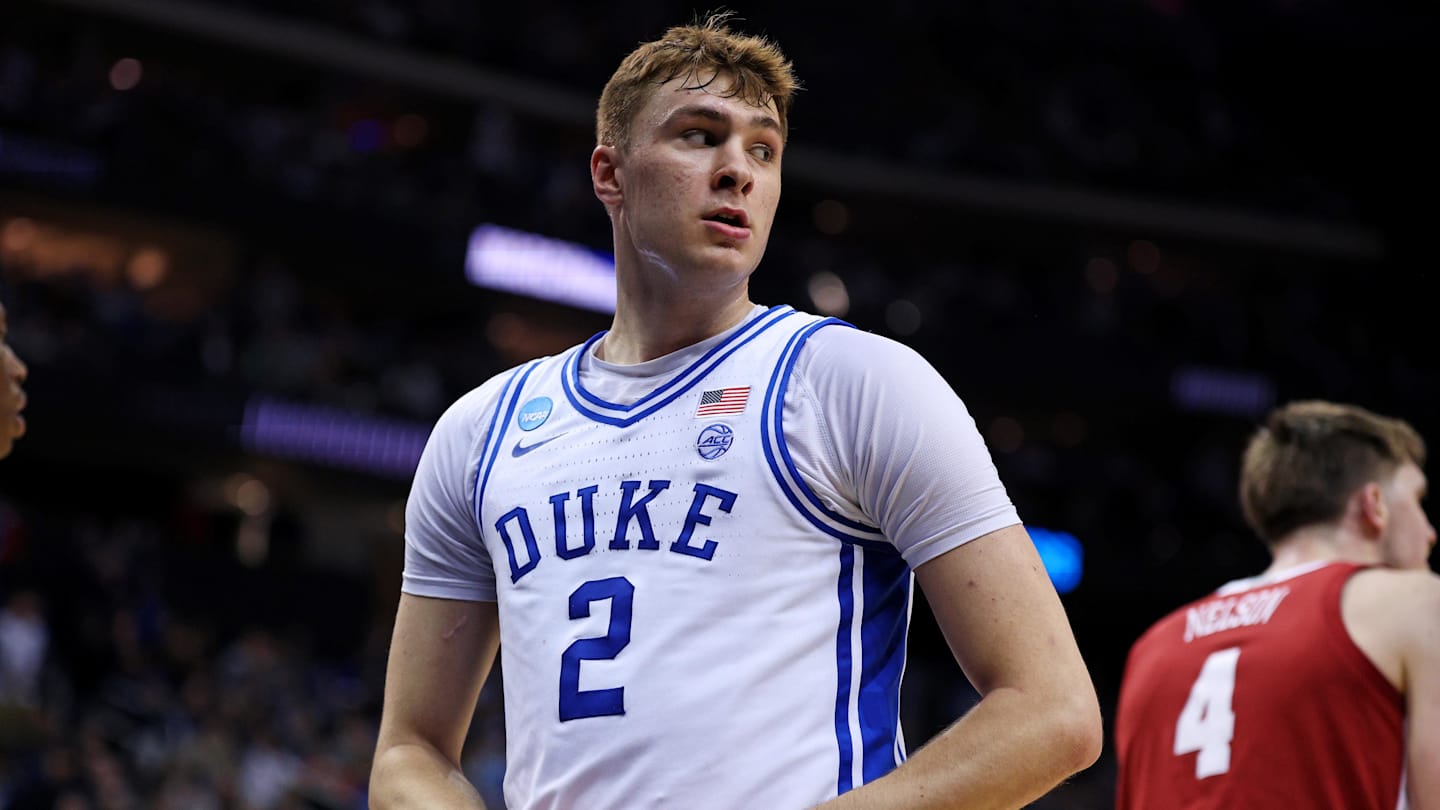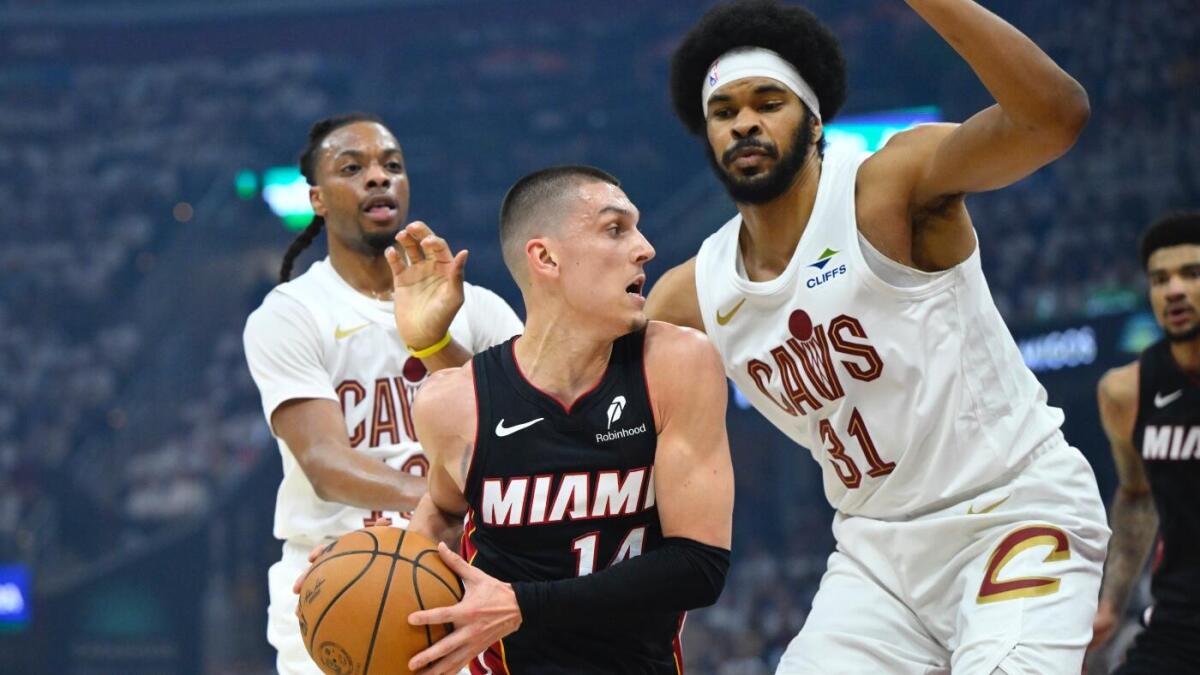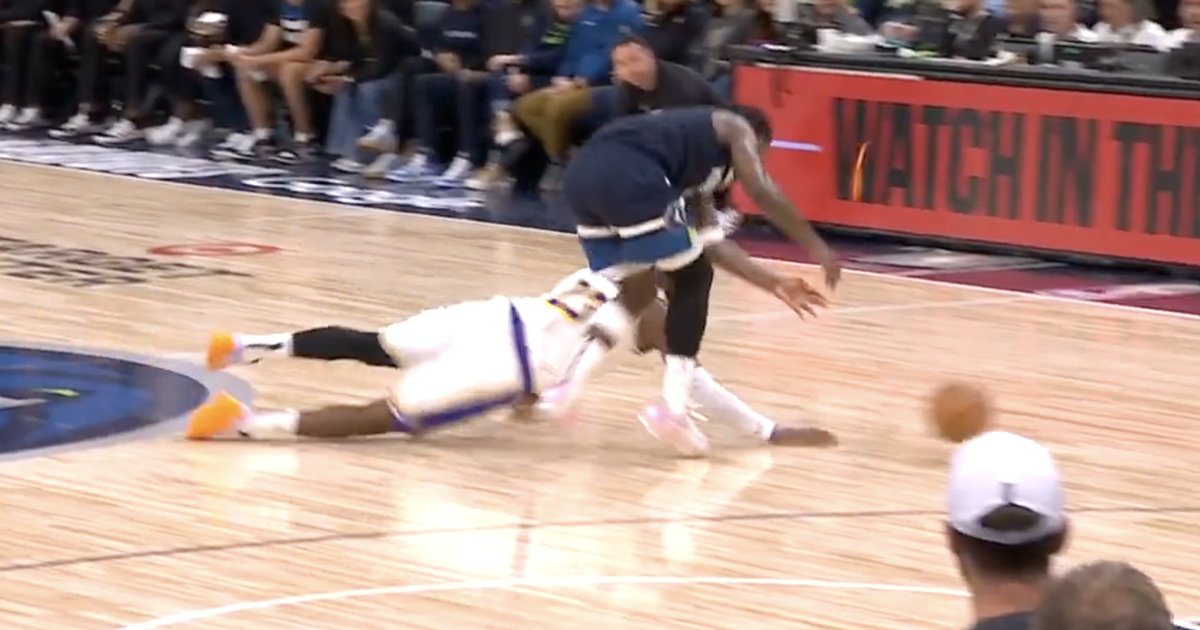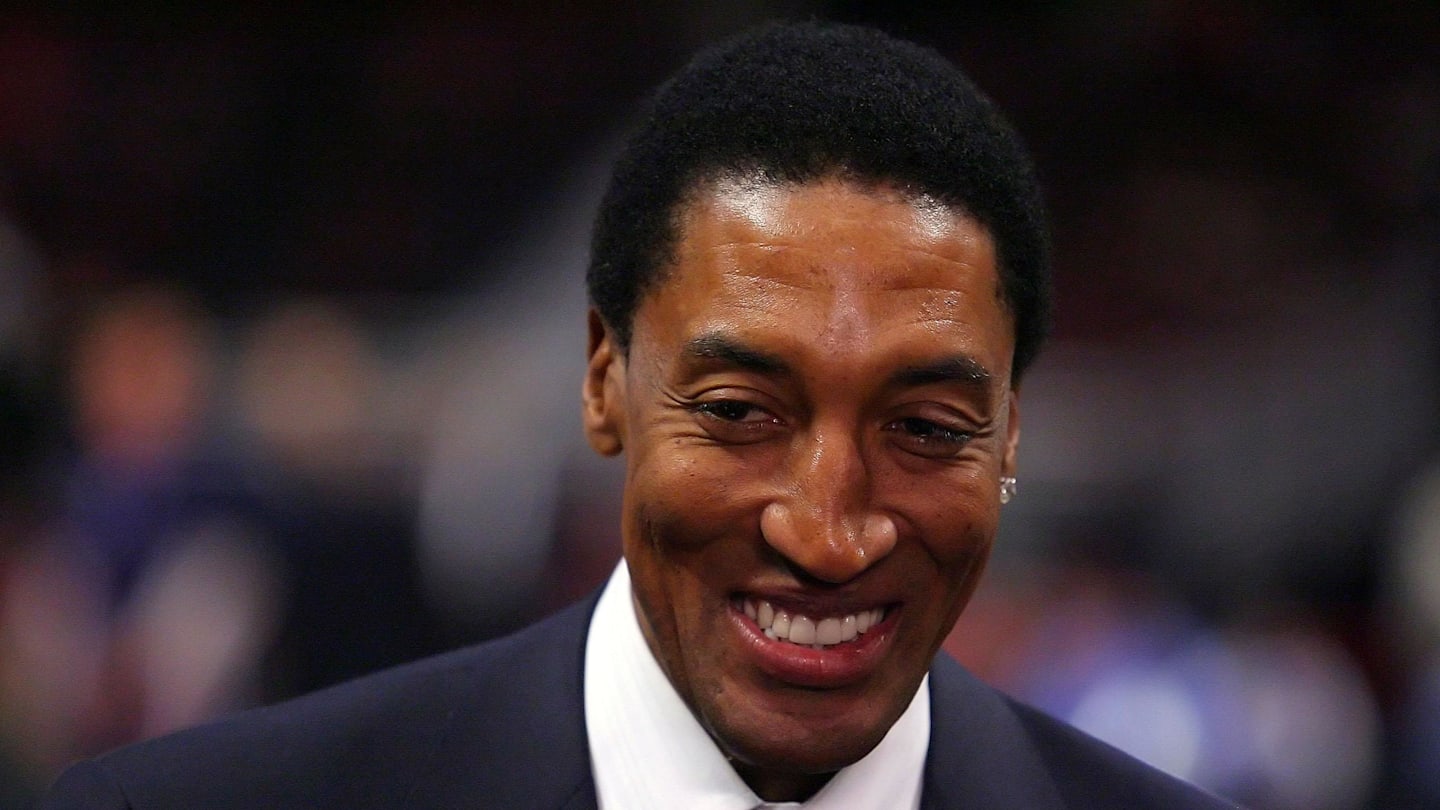The highly anticipated 2025 NBA draft is now fewer than two months away, and work is being done across the league to evaluate and vet which players teams want to build their franchises around moving forward. The top prize is Duke’s Cooper Flagg, an electrifying talent who’s a clear favorite to come off the board first in late June.
Overall though, the draft pool (at least among college players) is the smallest it has been in a long time. The NBA released its early entry list Tuesday and just 106 players put their names in before becoming auto-eligible, the lowest mark in a decade. While many early entrants in the past have always planned to return to college, it’s still notable seeing so many fewer players interested in going through the pre-draft process. That’s being driven in large part by the huge sums of money available to players who stay in college via NIL deals. Some programs even wrote those NIL contracts contingent on players not testing the draft waters, not wanting to deal with the uncertainty of a top player waiting until late May to decide on returning or not.
With the available player pool finalized, who are the names to watch after Flagg at the top of this year’s draft? Here’s Sports Illustrated’s latest look at the top prospects in this year’s draft class, including notes on a few teams that could target some of the top players on the board.
Flagg’s dream season at Duke ended in heartbreak in the Final Four against Houston, but his strong NCAA tournament only further solidified his case for No. 1 in this class. He’s the safest bet in this draft to at least be a plus-starter but still has the upside to blossom into a perennial All-Star if he continues his upward trajectory.
Potential Fits: Whoever gets No. 1 pick
While his freshman season was disjointed due to injuries and illness, Harper still showed enough potential as a lead guard to generate plenty of intrigue throughout the NBA. If he hits his ceiling, Harper has a chance to be one of the top shot-creators in the NBA with his size, skill level in ball screens and shotmaking ability.
Potential Fits: Utah Jazz, Washington Wizards, New Orleans Pelicans
Bailey’s certainly not a perfect prospect with his struggles getting to the rim and limitations as a passer, but his offensive talents are not in question. This is one of the most advanced shotmakers to come out of the college ranks in a long time, all while possessing impressive size and length at nearly 6′ 10″. If he hits his potential, he could be a franchise-changing talent.
Potential Fits: Utah Jazz, Charlotte Hornets, Brooklyn Nets
Edgecombe’s an elite athlete with a nose for the ball, and it was impressive to watch his confidence in his three-point shot blossom at the same point in the year that many freshmen hit the proverbial wall. He shot 39% from deep in conference play, and that paired with his explosiveness around the rim (33 dunks this season) makes for a clear top-five prospect.
Potential Fits: Washington Wizards, Charlotte Hornets, Philadelphia 76ers
This is a bit higher than Maluach is projected to go on draft night, but don’t be surprised if he climbs throughout the pre-draft process as teams dive deeper into the film. At his best, Maluach is a complete game-changer on both ends because of his size and instincts around the rim. He has to get stronger if he wants to step into NBA games immediately and contribute, but the tools are all there. Given how valuable rim protection is, I expect Maluach to climb boards.
Potential Fits: Brooklyn Nets, Toronto Raptors, Chicago Bulls
Knueppel is a pretty safe choice anywhere outside the top three in this draft, possessing excellent size and three-point shooting ability. He also showed more skill operating in ball screens than some expected at Duke, which is a major reason to invest in his upside moving forward. He profiles as a fantastic complementary piece on a winning team.
Potential Fits: Philadelphia 76ers, San Antonio Spurs, Portland Trail Blazers
Even as a limited three-point shooter (23% in SEC play), Fears lives at the rim, using his elite speed and first step to blow by defenders. Behind Harper, he’s likely the most dynamic on-ball guard in this draft, capable of simply taking over games when he’s at his best. Doing what he did this season at Oklahoma in a historically good SEC at just 18 years old is remarkably impressive.
Potential Fits: Washington Wizards, Brooklyn Nets, Toronto Raptors
Jakucionis is still mistake-prone, committing six turnovers in each of his final four college games. But the good outweighs the bad more often than not with the Lithuanian passing ace, who also happens to have enough of an offensive bag to go hunt his own shot as a scorer. If you can live with the occasional mistakes, he’s well worth investing in.
Potential Fits: New Orleans Pelicans, Toronto Raptors, Dallas Mavericks
Johnson is a true three-level scorer and is one of the best in this draft at getting his own shot. There are reasonable questions to be asked about how much his style of play contributes to winning and whether he’s a good enough decision-maker to take on primary ballhandling duties. If nothing else though, you can bet on Johnson as a scoring spark from the moment he puts on an NBA uniform.
Potential Fits: New Orleans Pelicans, San Antonio Spurs, Dallas Mavericks
While Demin is still a ways away from hitting his ceiling, he’s a highly intriguing talent given his size and passing ability. You won’t see many 6′ 9″ players with his vision and feel for the game, but becoming a consistent three-point shooter and adding strength will be essential to him blossoming into a high-level pro.
Potential Fits: Portland Trail Blazers, Atlanta Hawks, Minnesota Timberwolves
Queen had a monster year at Maryland, taking the Terps to the Sweet 16 and averaging 16 points and nine rebounds per game in the process. He’s a bit of a tweener as a guy you don’t trust to space the floor or protect the rim, but he’s so skilled offensively that he can likely find a role quickly as an offense-first four-man in the league.
Potential Fits: Toronto Raptors, Portland Trail Blazers, Houston Rockets

Richardson’s hyper-efficient freshman year elevated him from a projected multi-year college player into a lottery pick. While not blessed with the elite athleticism or physical tools of his father (NBA veteran Jason Richardson), Jase Richardson’s maturity and feel for the game to go with his clutch instincts make him a logical fit in the late lottery.
Potential Fits: Chicago Bulls, Dallas Mavericks, San Antonio Spurs
Riley’s slight frame may give some teams pause, but his offensive gifts are rare for a big wing. He showed off his impressive skill set at Illinois, finishing strong down the stretch after entering the starting lineup, averaging over 16 points per game in his final seven. I’d also bet on him as a much better shooter than the 33% he shot in Champaign.
Potential Fits: Atlanta Hawks, Chicago Bulls, Oklahoma City Thunder
McNeeley possesses ideal size on the wing and has impressive scoring instincts. Billed as an elite shooter out of high school, McNeeley wasn’t great from deep at UConn, shooting just 31% from distance. That said, he was hampered by an ankle injury that sidelined him for essentially all of January, and after he returned, he shot just 27% for the remainder of the year. I’ll buy a healthy McNeeley developing into a reliable NBA floor-spacer with some scoring upside.
Potential Fits: Portland Trail Blazers, San Antonio Spurs, Miami Heat
Essengue has come on strong late this season in the German BBL, now averaging better than 12 points and five rebounds per game in a high-level pro league and shooting the ball more consistently from deep. He’s one of the youngest players in this class but has a highly intriguing skill set to tap into long-term.
You could see Murray-Boyles go as high as the back half of the top 10. He’s somewhat fit dependent though as a non-shooting power forward whose production largely comes from doing the little things. I’d feel more comfortable drafting him in the teens, but could be sold on taking him higher in the right context.
Talked about in the same breath as Harper among the draft’s top playmakers in the preseason, Traore’s up-and-down season in the French Pro A has knocked him down a bit in the eyes of some teams. That said, he possesses enough speed and ball-screen talent to be worthy of a top-20 pick.
Bryant’s numbers at Arizona don’t pop, but he oozes upside as a big wing shooter and defender. Arizona is believed to have put a highly lucrative offer on the table to get him to come back to school, but if I were an NBA team front office (especially one with multiple first-round picks) I’d want to get him into my organization ASAP.
Another key draft decision to monitor is Sorber’s, who showed serious potential during a freshman season at Georgetown cut short by injury. He’d likely be one of college basketball’s highest-paid players in 2025–26 with a chance to rise into the lottery conversation, but the chance to be a first-round pick is hard to pass up.
Beringer’s shot blocking instincts have NBA teams intrigued. The 18-year-old has played a key role in the Adriatic League for Cedevita Olimpija despite being relatively new to the game and could be a major upside swing for teams in the teens or 20s.
Wolf isn’t for everyone as a 7-footer who has spent most of his career with the ball in his hands. The right team might be able to extract a ton of value out of a high-feel forward like Wolf who can pass, make threes and battle on the glass.
Fleming possesses elite physical tools with a chiseled frame and a 7′ 5″ wingspan. Combine that with the fact that he shot 39% from deep on high volume this season and Fleming is the type of player that will intrigue plenty of teams in the back half of the first round.
Clayton’s March success propelled him into more first-round conversations. With teams hunting young, controllable pieces that can immediately play a role, Clayton’s ability to create his own shot could be valuable to teams in the 20s.

Saraf’s a fun player to watch when he’s at his best, playing with so much creativity as a scorer and playmaker. He has had a somewhat up-and-down season in Germany with Ulm, but the film from his U18 performances with the Israeli national team is among the most impressive by any prospect this cycle.
Clifford was ridiculously good for Colorado State in the Rams’ run to the NCAA tournament. He’s one of the oldest prospects in the draft and his handle leaves something to be desired, but he seems like a fairly safe bet with two years of impressive shooting and the size to guard multiple positions.
González failing to earn consistent playing time at Real Madrid has dropped him down from being a projected top-10 pick in the preseason to later in the first round, but there’s still potential here as an athletic, hard-playing wing who does plenty that contributes to winning.
Lendeborg has committed to Michigan for next season in the NCAA transfer portal but is working his way through the draft process as well, with the leverage of a high-priced deal from the Wolverines to use as he angles for a promise from an NBA team.
Newell was super productive in his lone season at Georgia. He’s something of a tweener though, not consistent enough a three-point shooter to bet on as a true stretch big, but lacking the physicality or rim protection you’d like out of a more traditional four/five.
Thiero’s limited as a shooter, but his motor runs as hot as anyone in this draft. He has the chance to be a game-changing defender with his size, speed and physicality. Thiero’s still young for a college veteran turning 21 next week and should continue to improve his offensive game.
Penda is a high-feel forward who makes up for his average athleticism with his versatility and passing ability. He’s not an overly high-upside piece, but could add a lot of value to someone’s rotation as a plug-and-play piece at either forward spot.
31. Ryan Kalkbrenner, Creighton Bluejays
32. Johni Broome, Auburn Tigers
33. Alex Condon, Florida Gators
34. Tahaad Pettiford, Auburn Tigers
35. Labaron Philon, Alabama Crimson Tide
36. Cedric Coward, Washington State Cougars
37. Drake Powell, North Carolina Tar Heels
38. Maxime Raynaud, Stanford Cardinal
39. Milos Uzan, Houston Cougars
40. Tyrese Proctor, Duke Blue Devils
41. Bogoljub Markovic, Mega Basket (Serbia)
42. Darrion Williams, Texas Tech Red Raiders
43. John Tonje, Wisconsin Badgers
44. Boogie Fland, Arkansas Razorbacks
45. Kam Jones, Marquette Golden Eagles
46. Chaz Lanier, Tennessee Volunteers
47. RJ Luis Jr., St. John’s Red Storm
48. Sion James, Duke Blue Devils
49. Ben Henshall, Perth Wildcats (Australia)
50. Jamir Watkins, Florida State Seminoles



